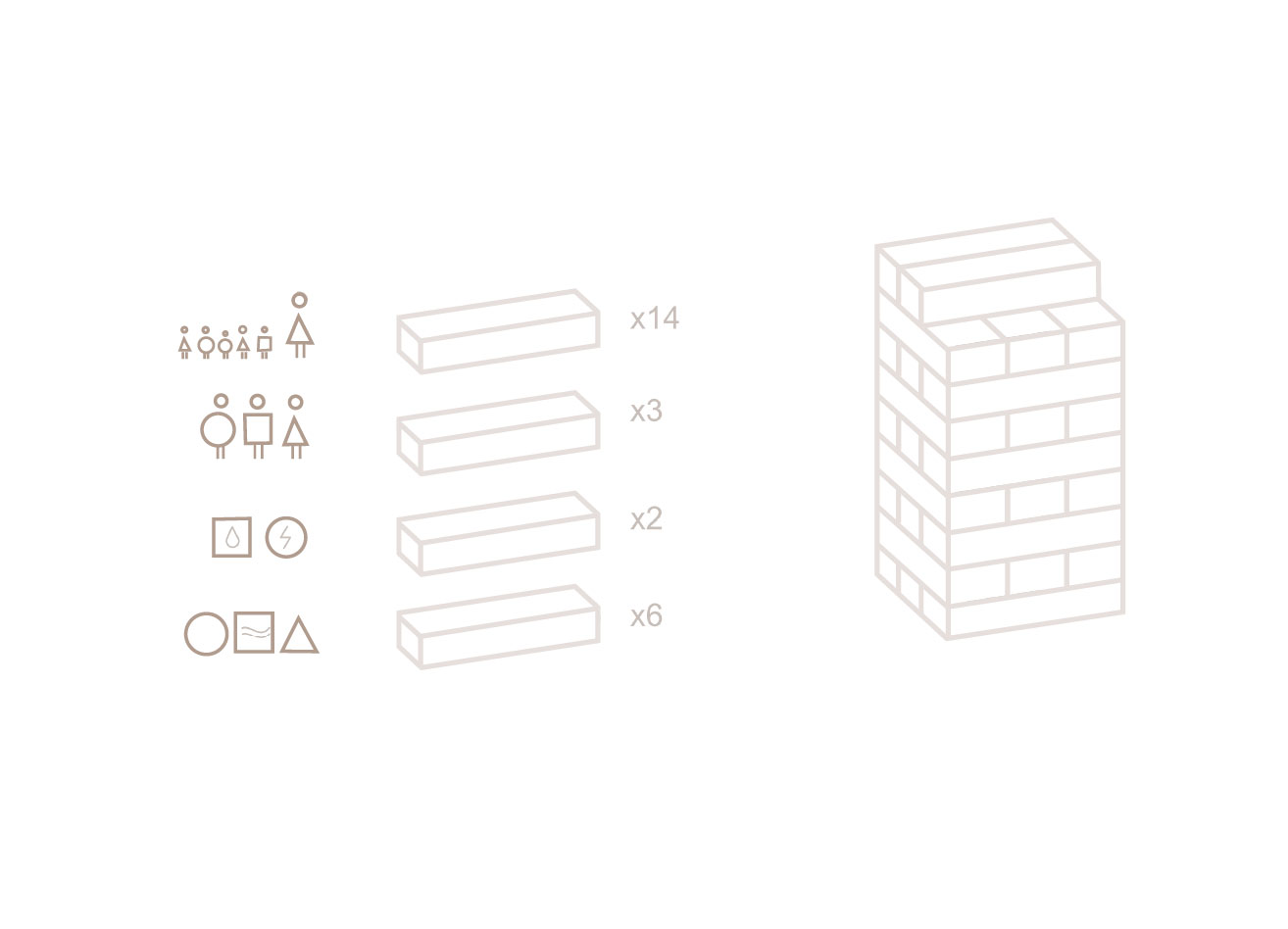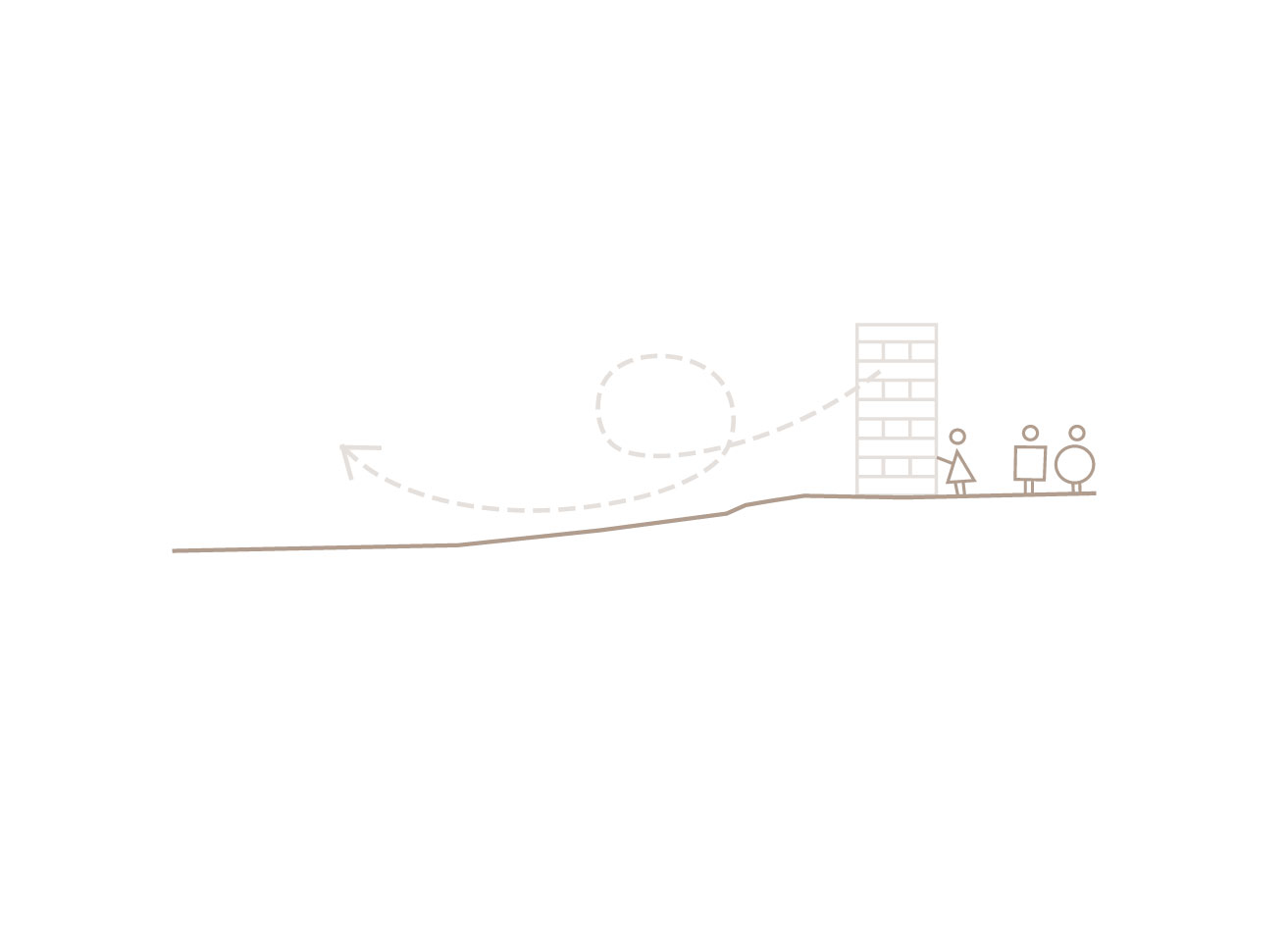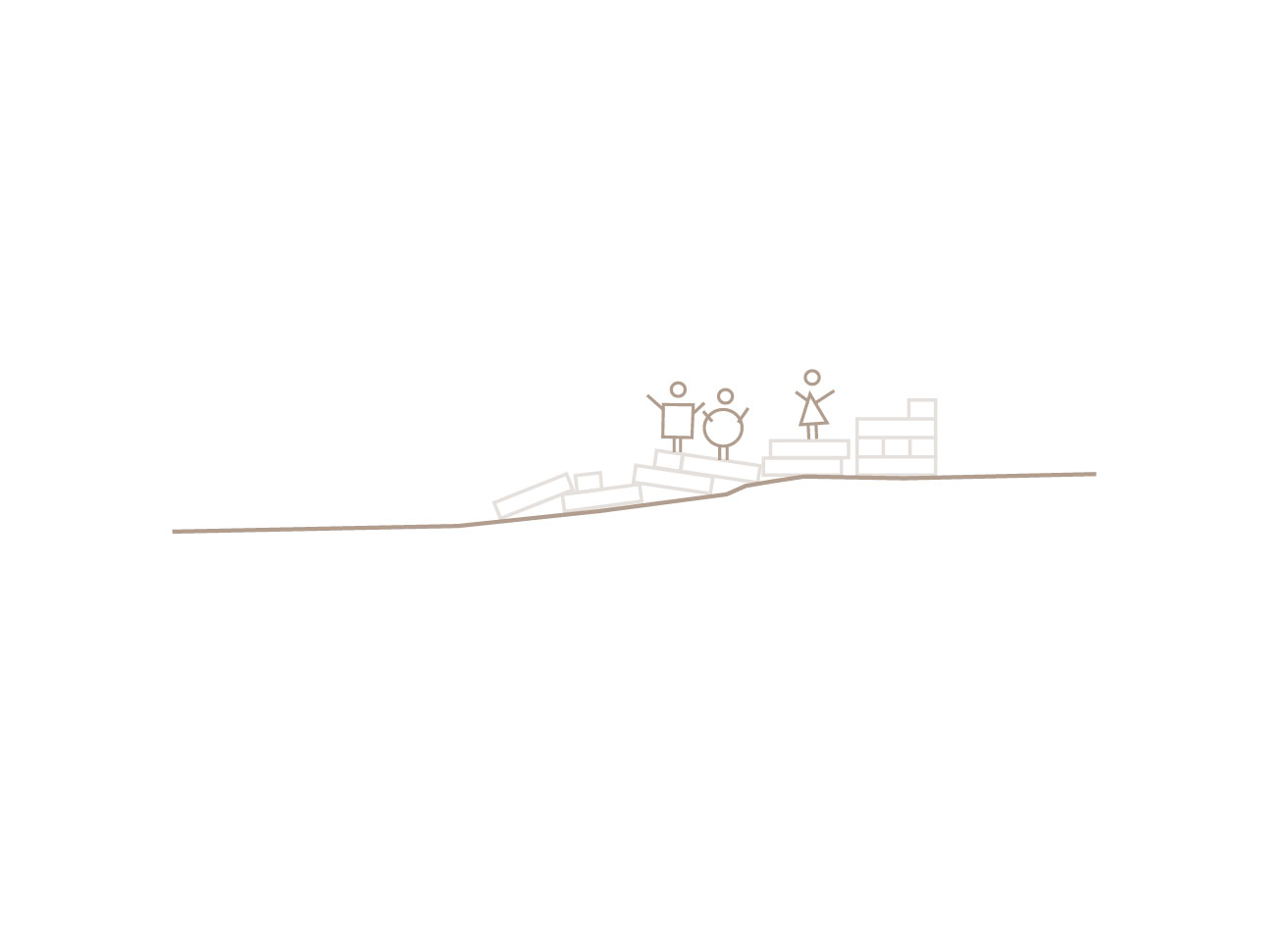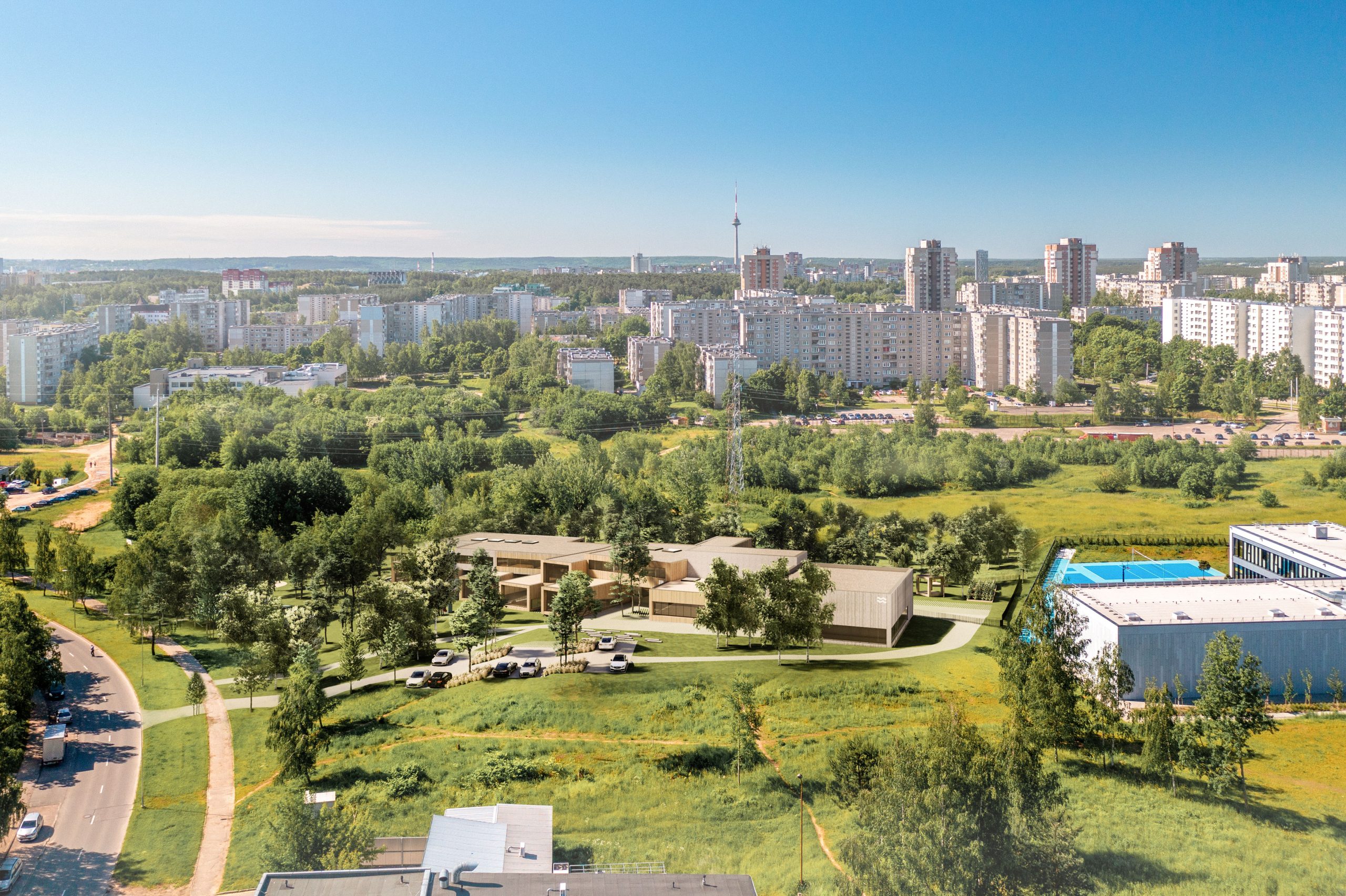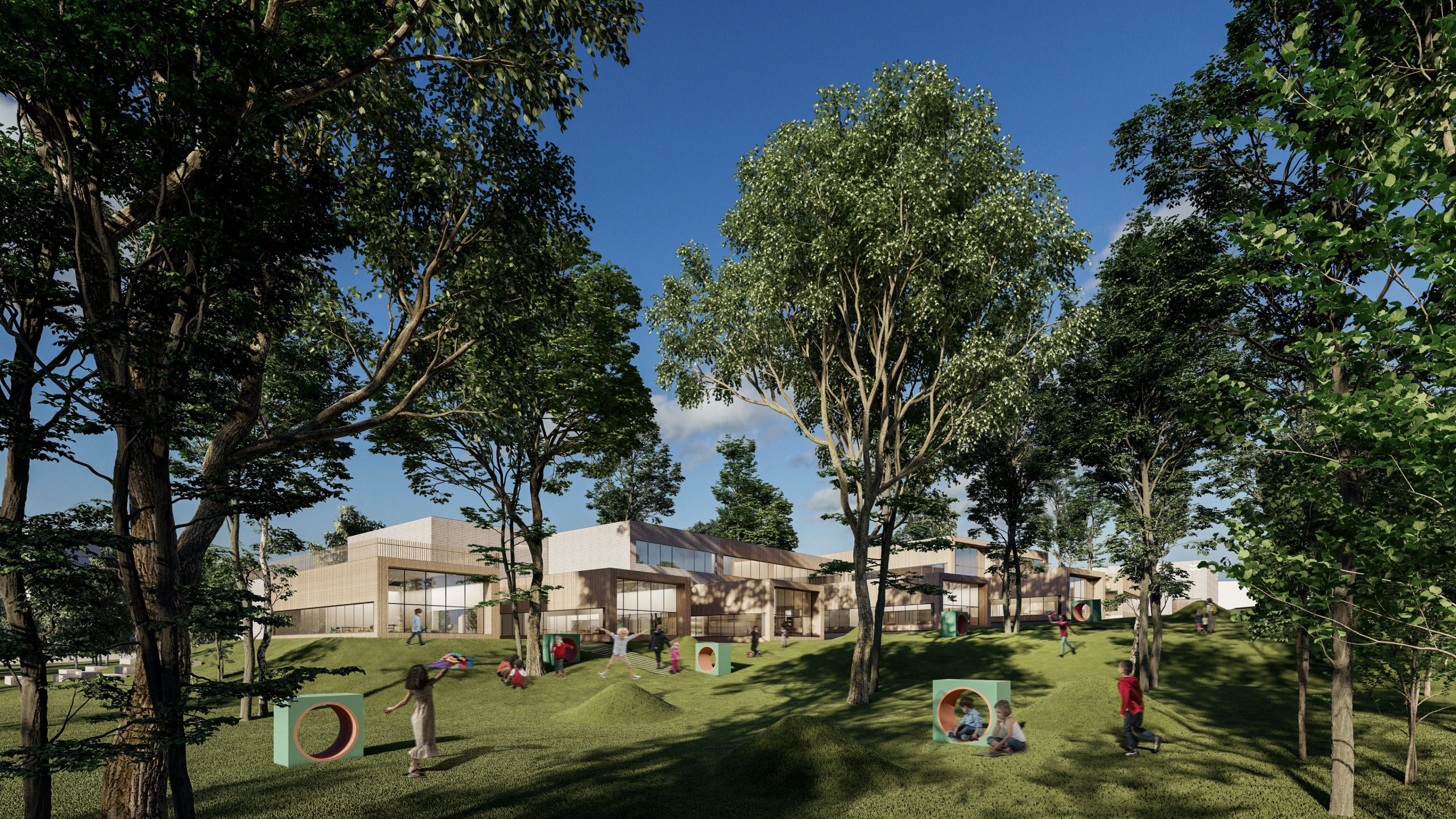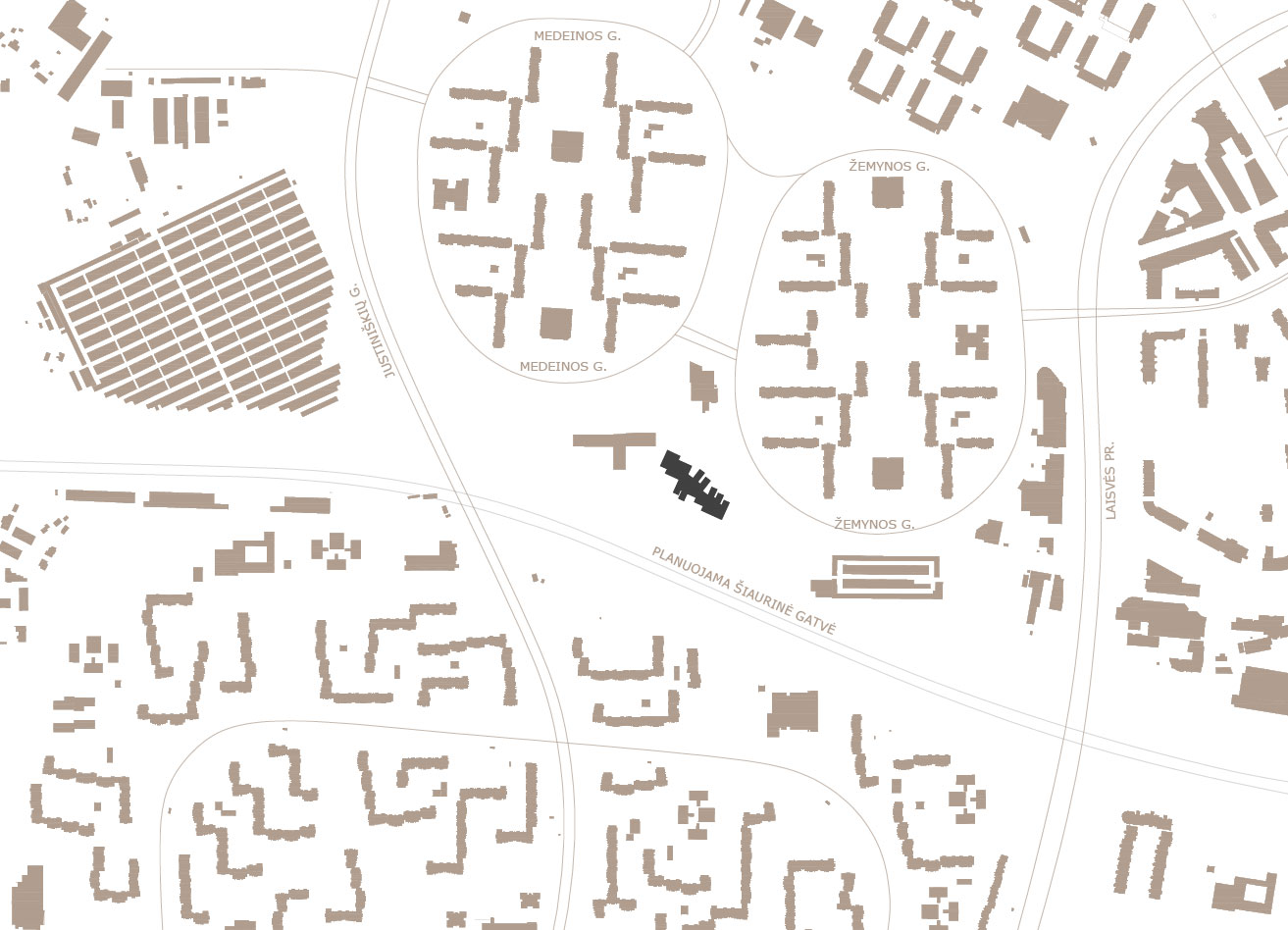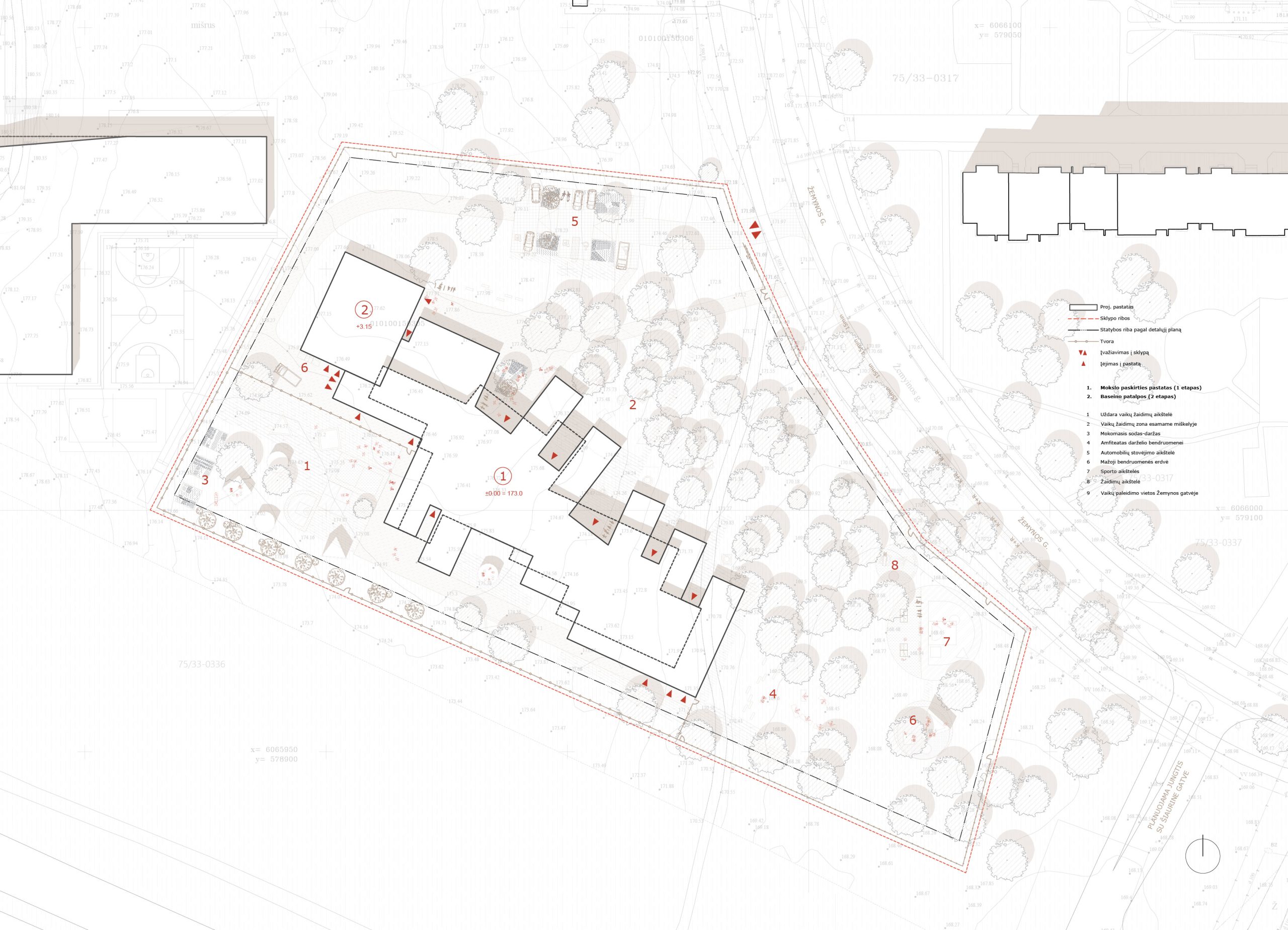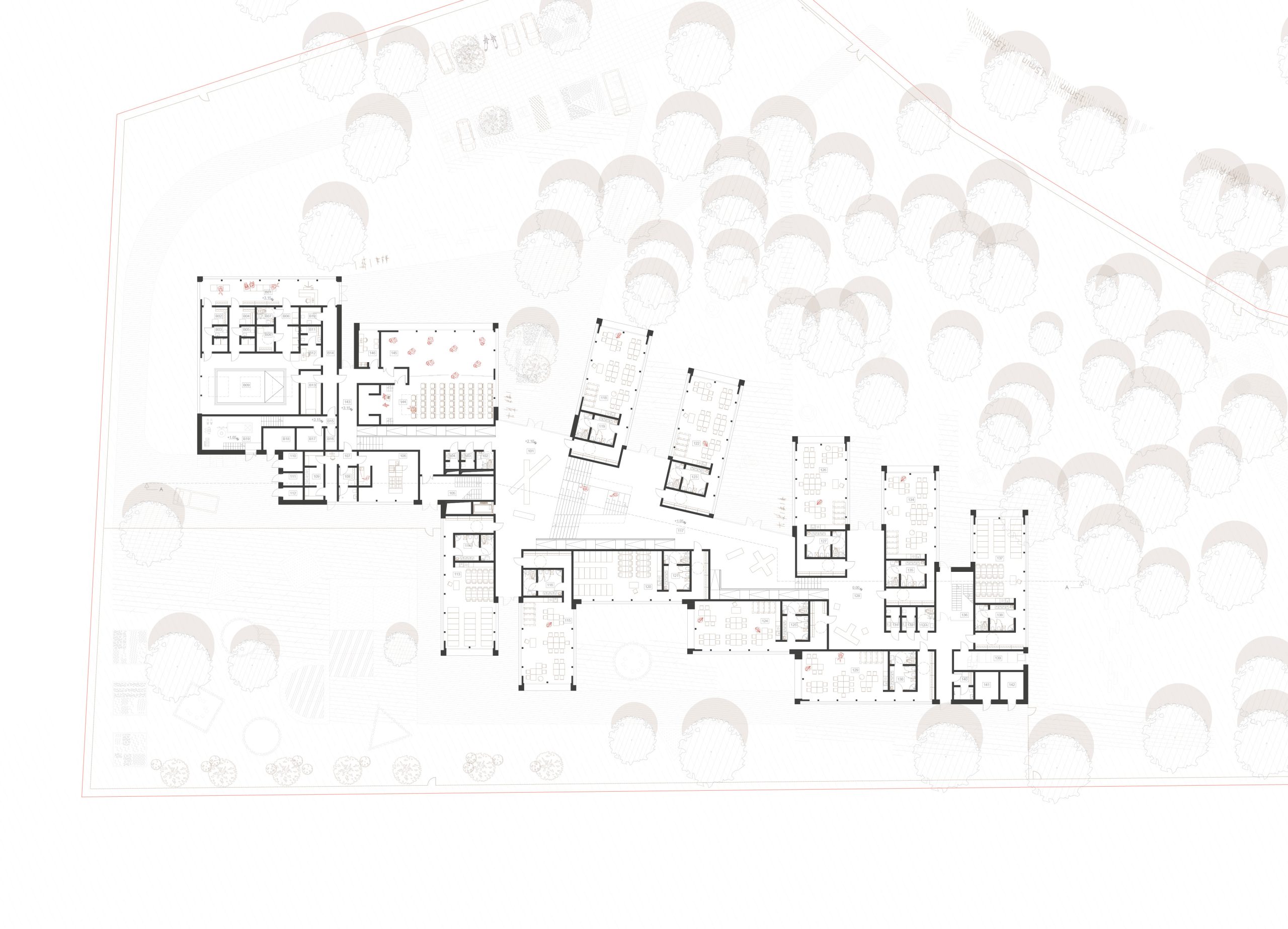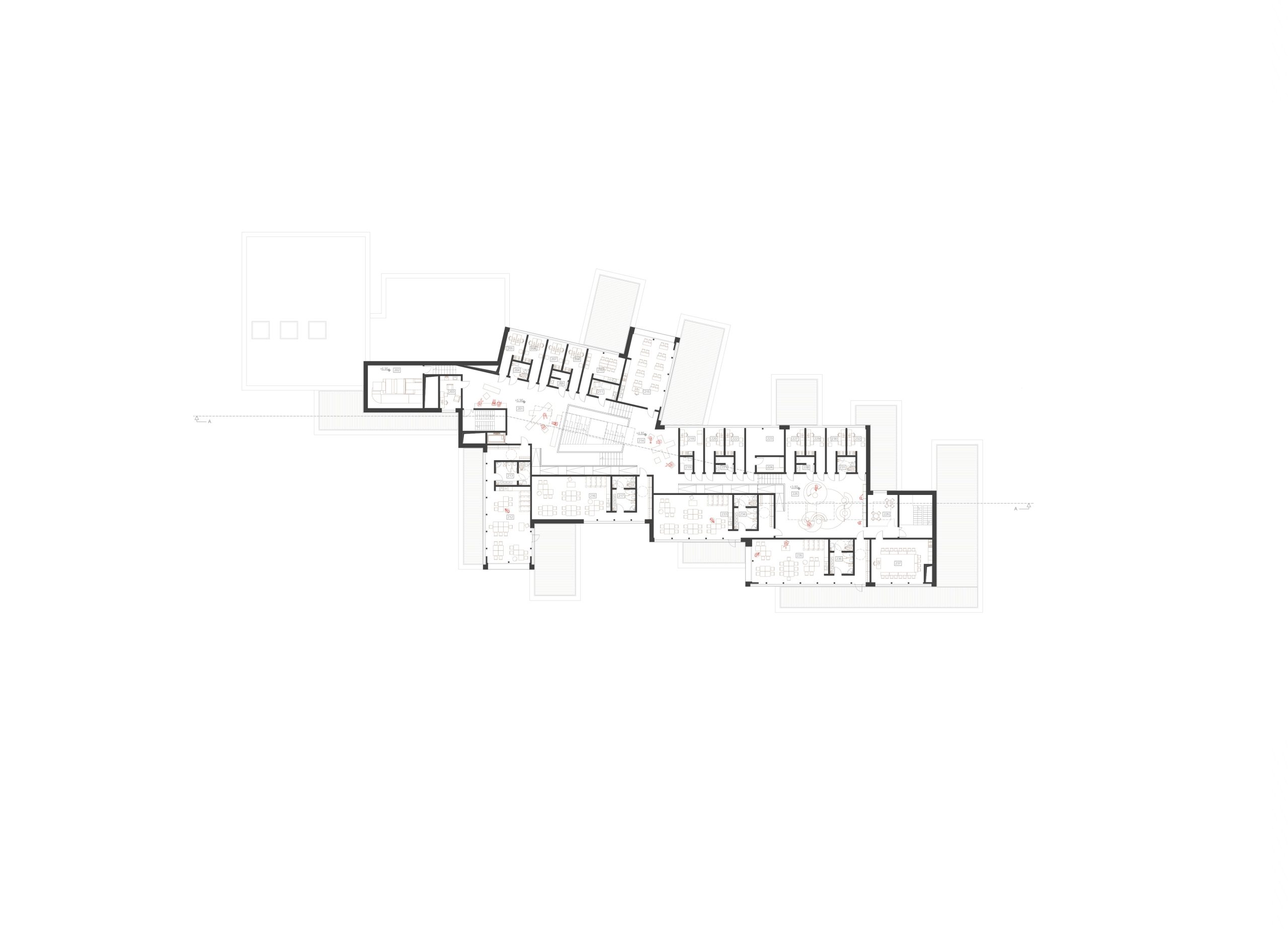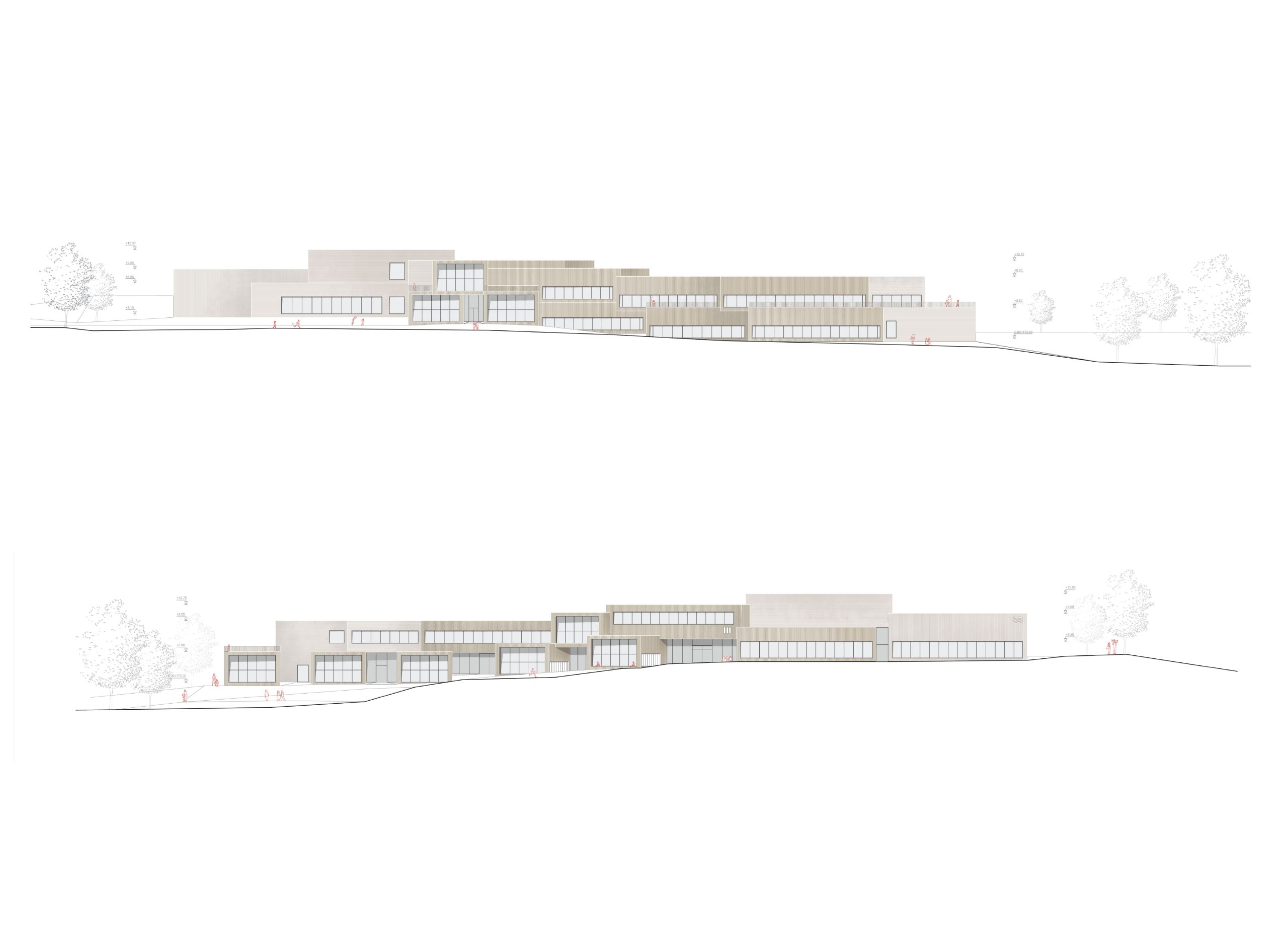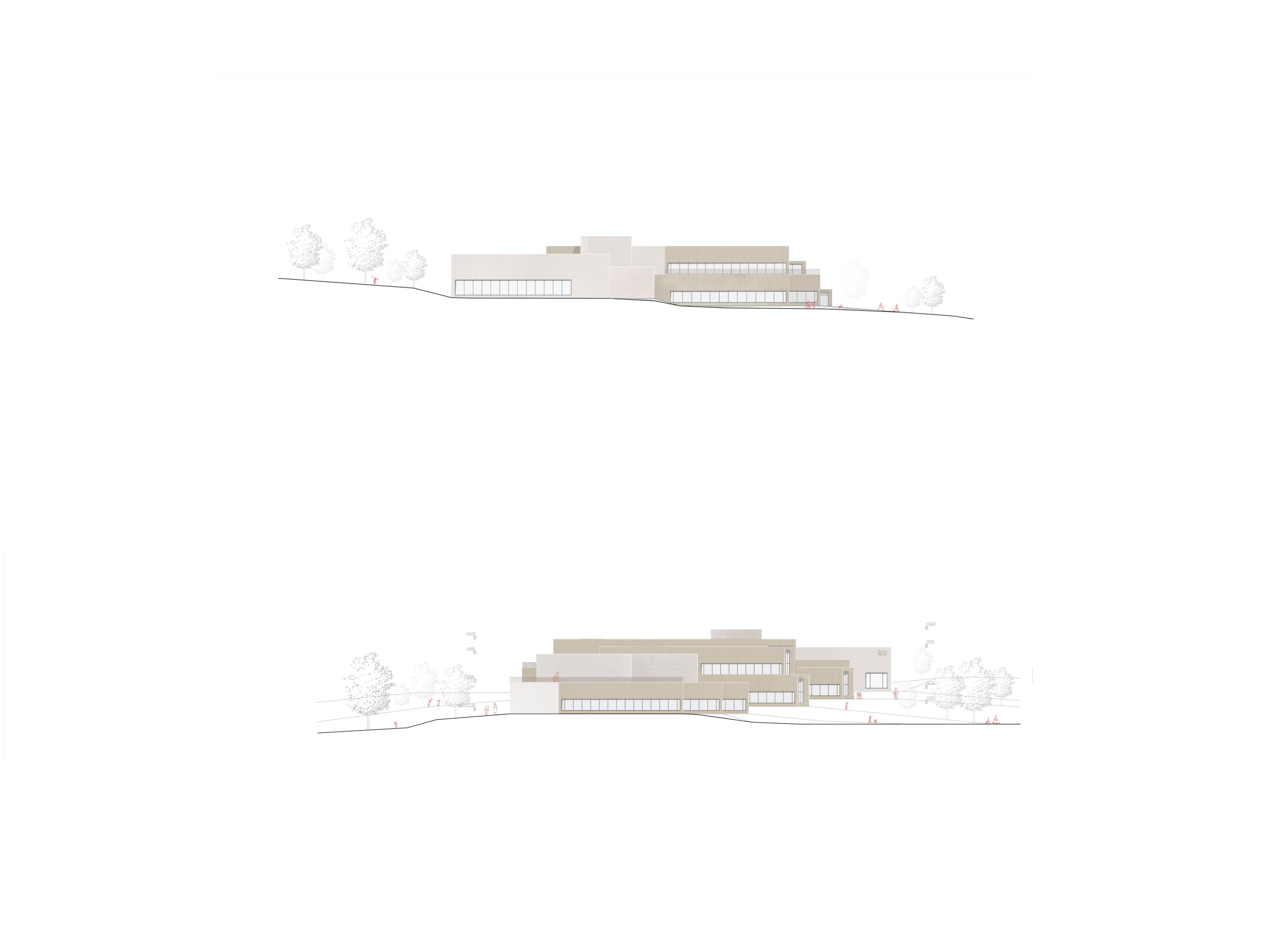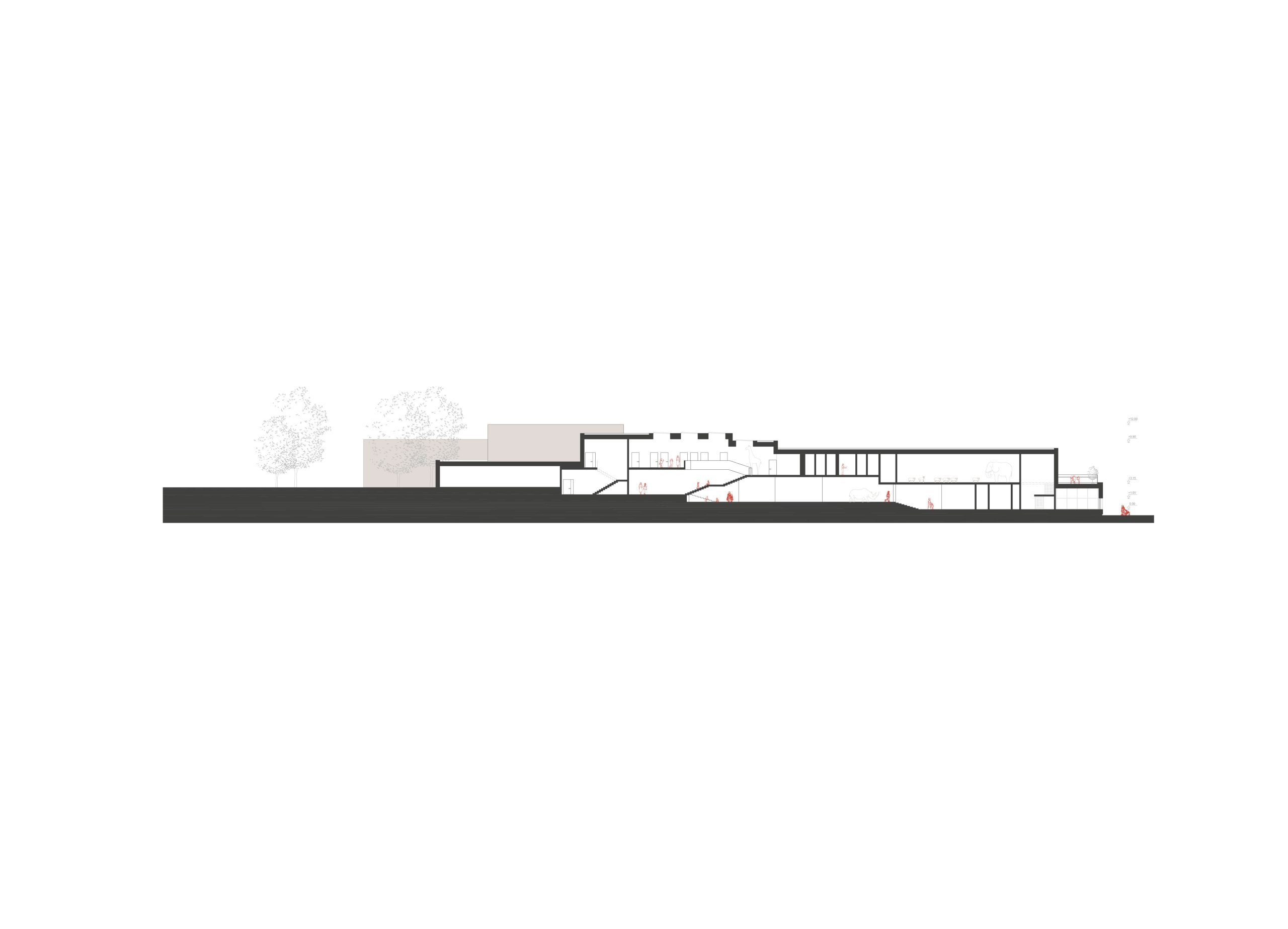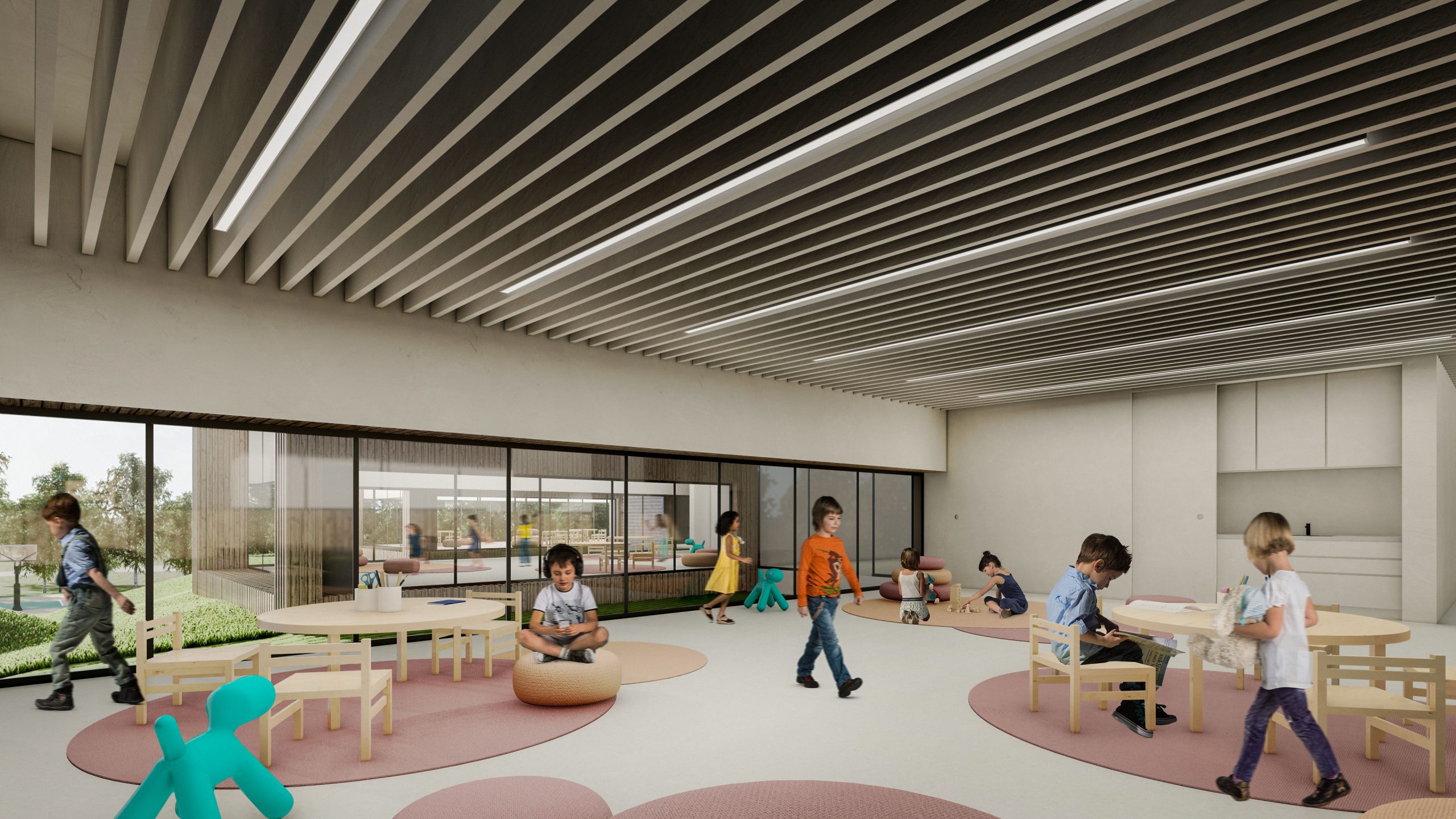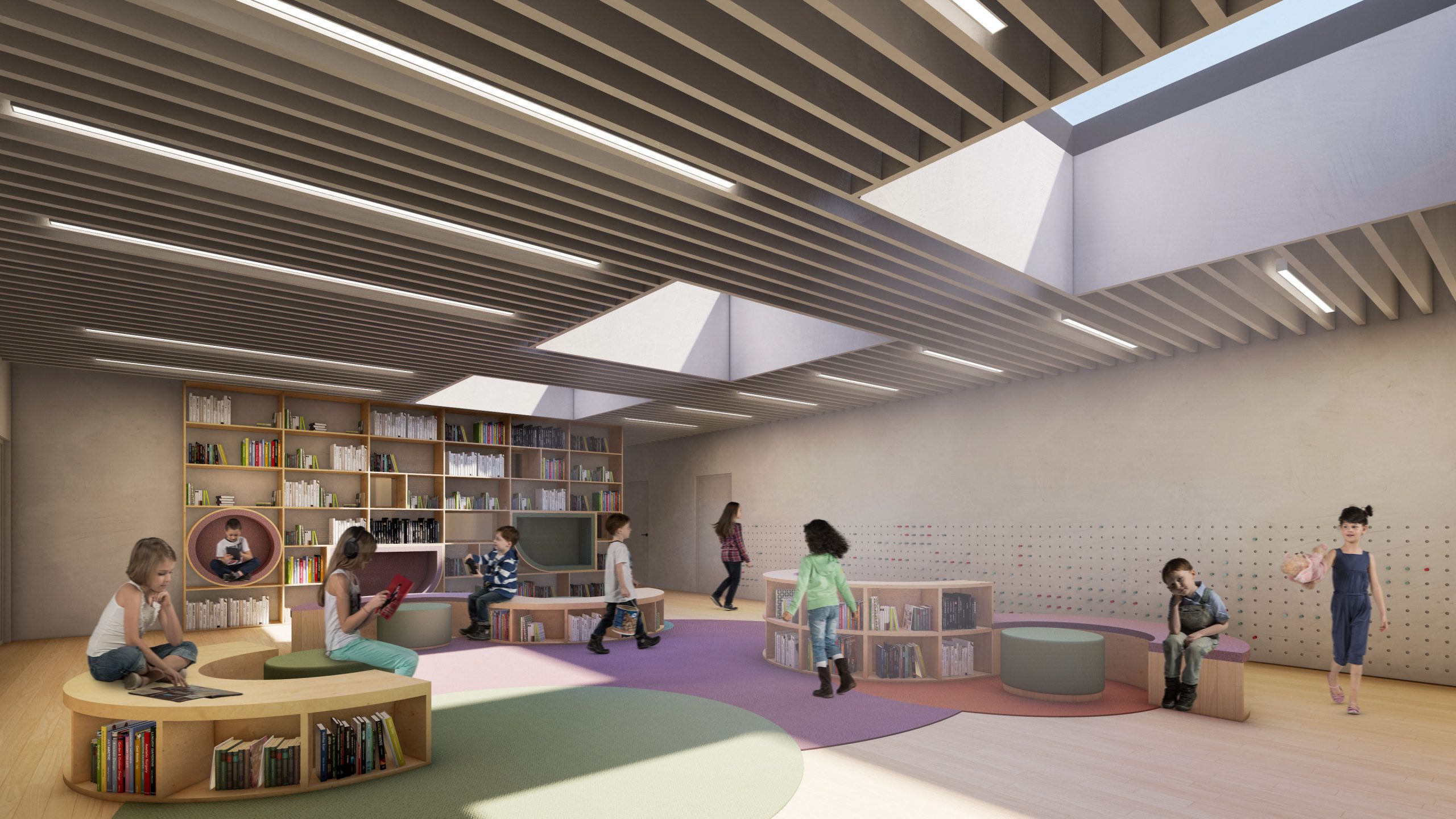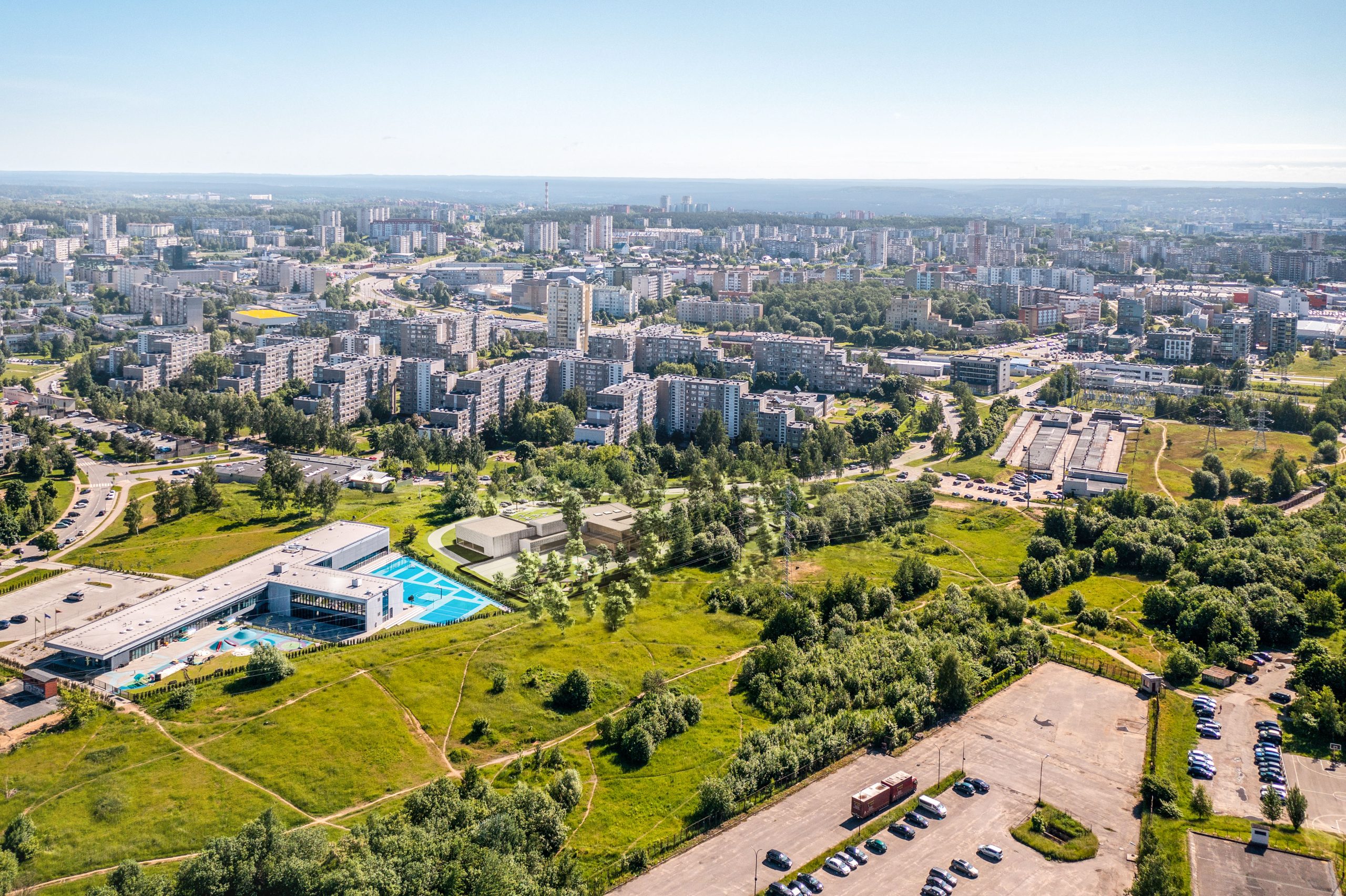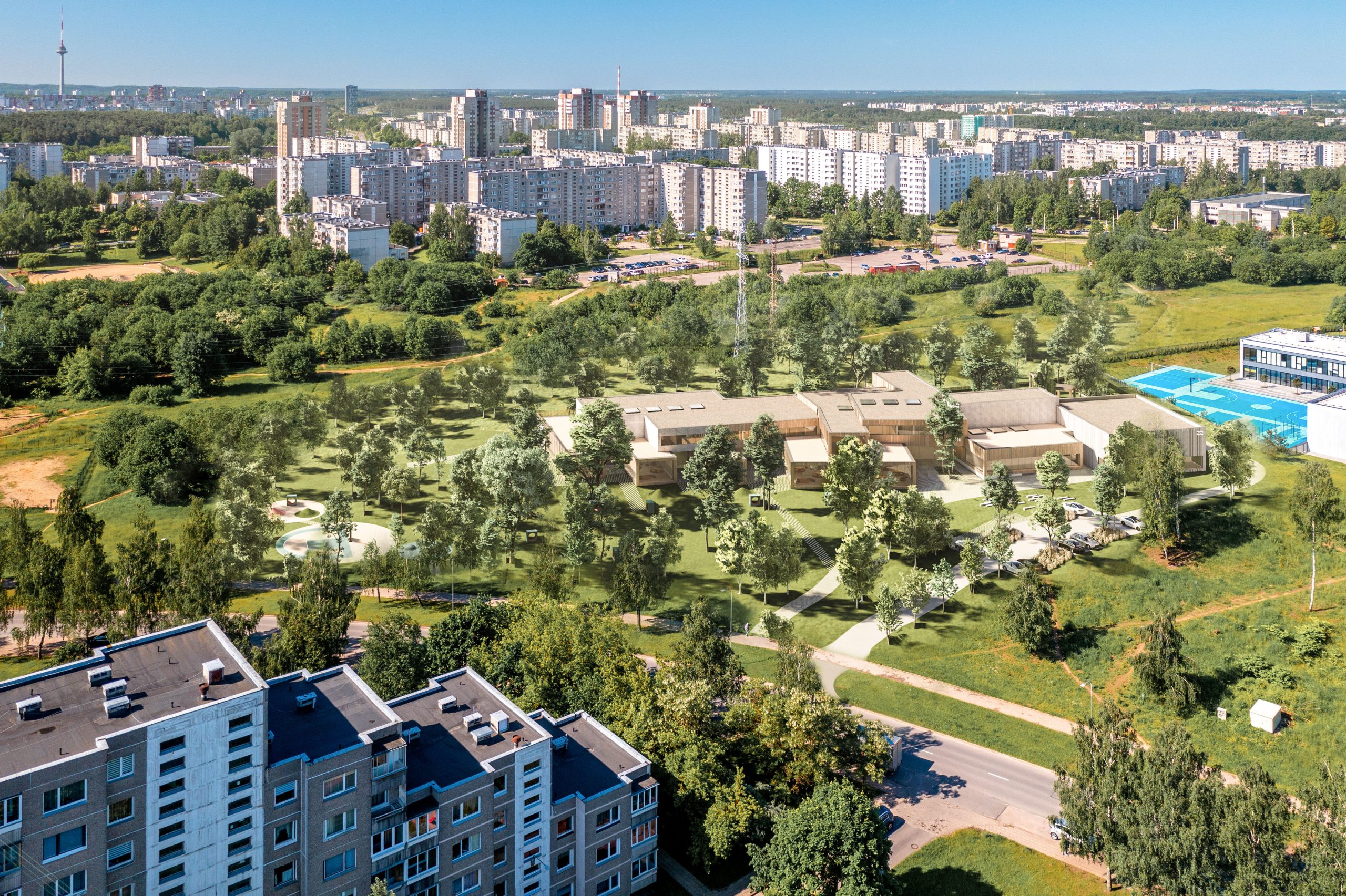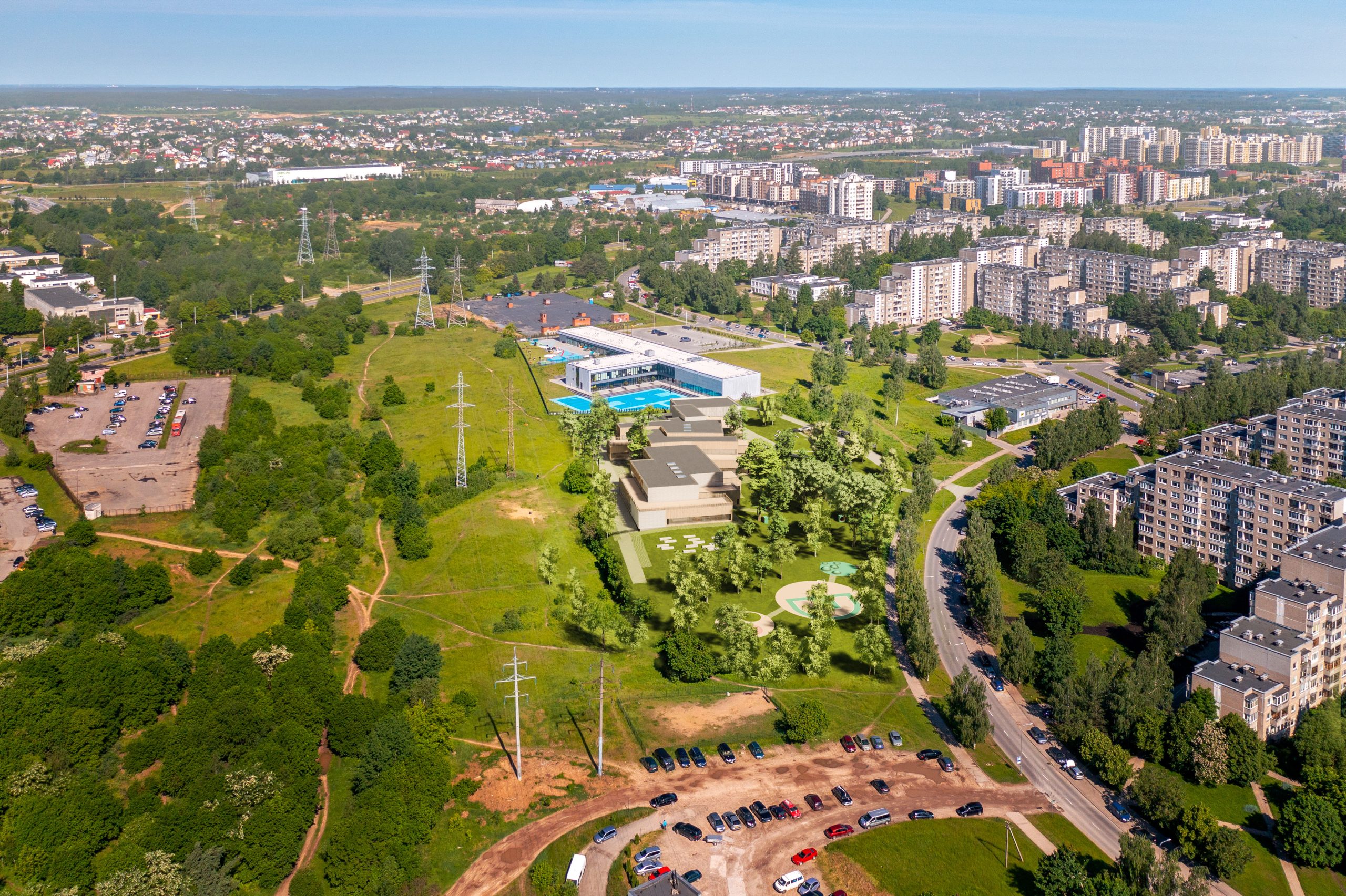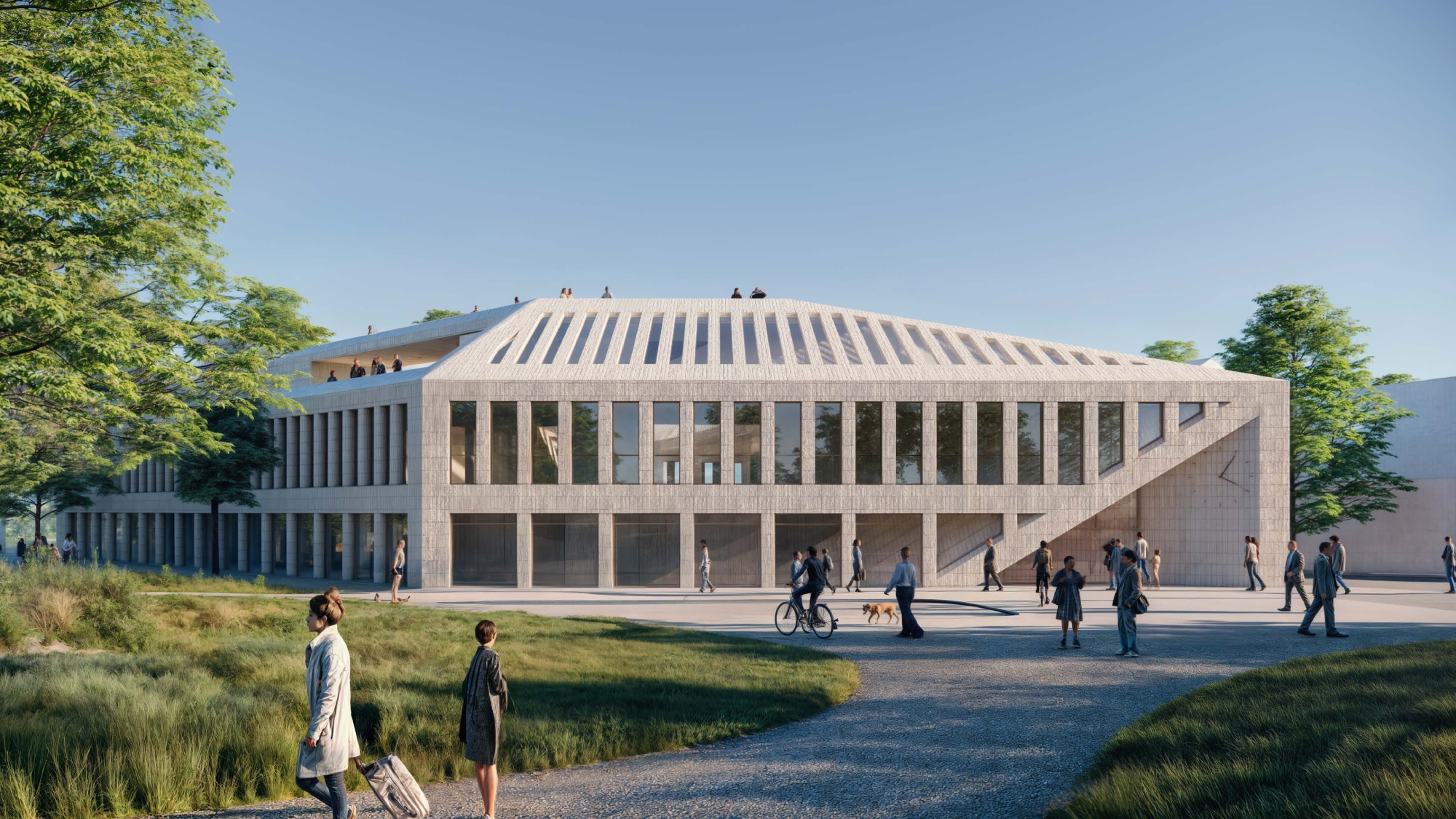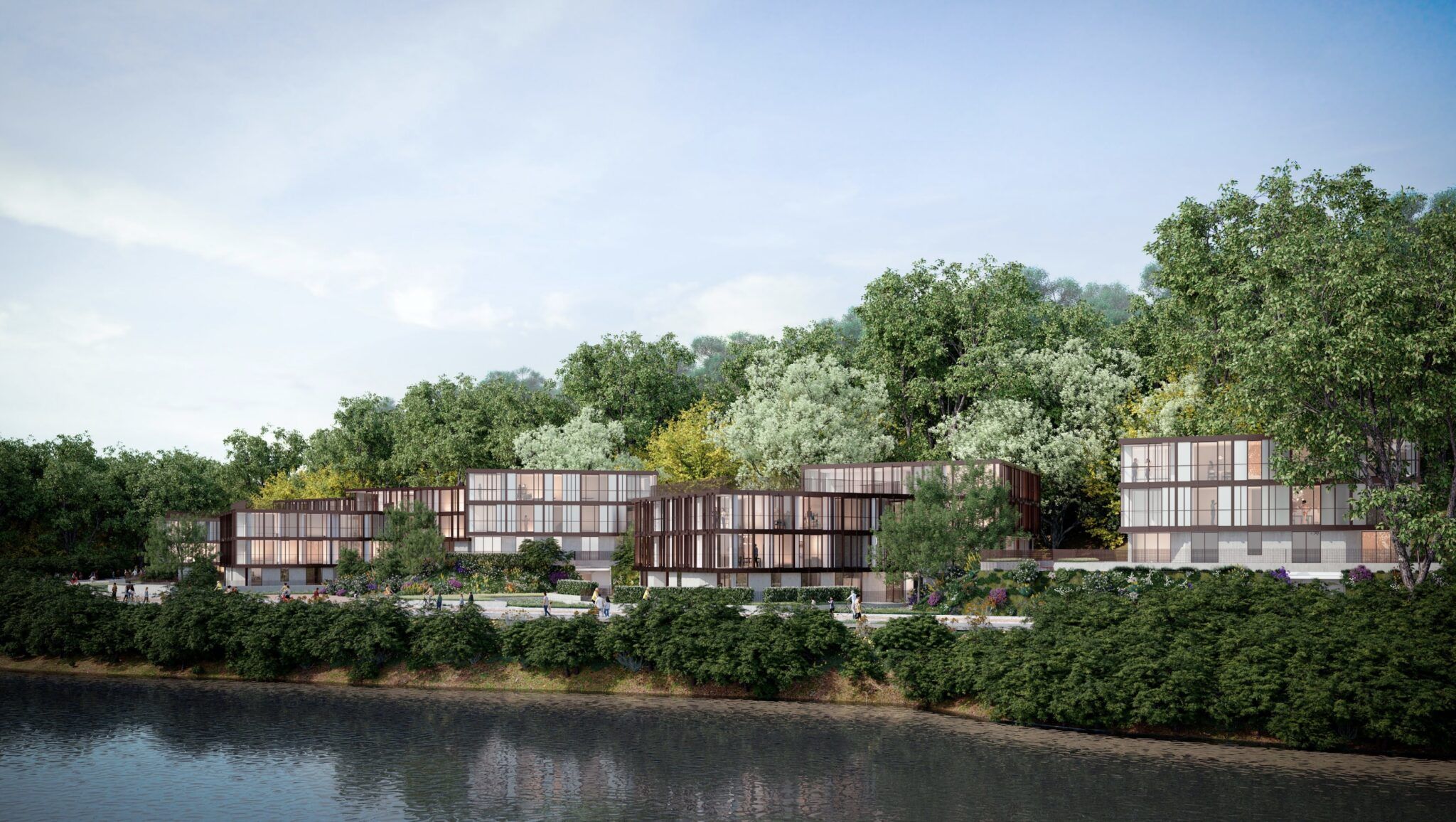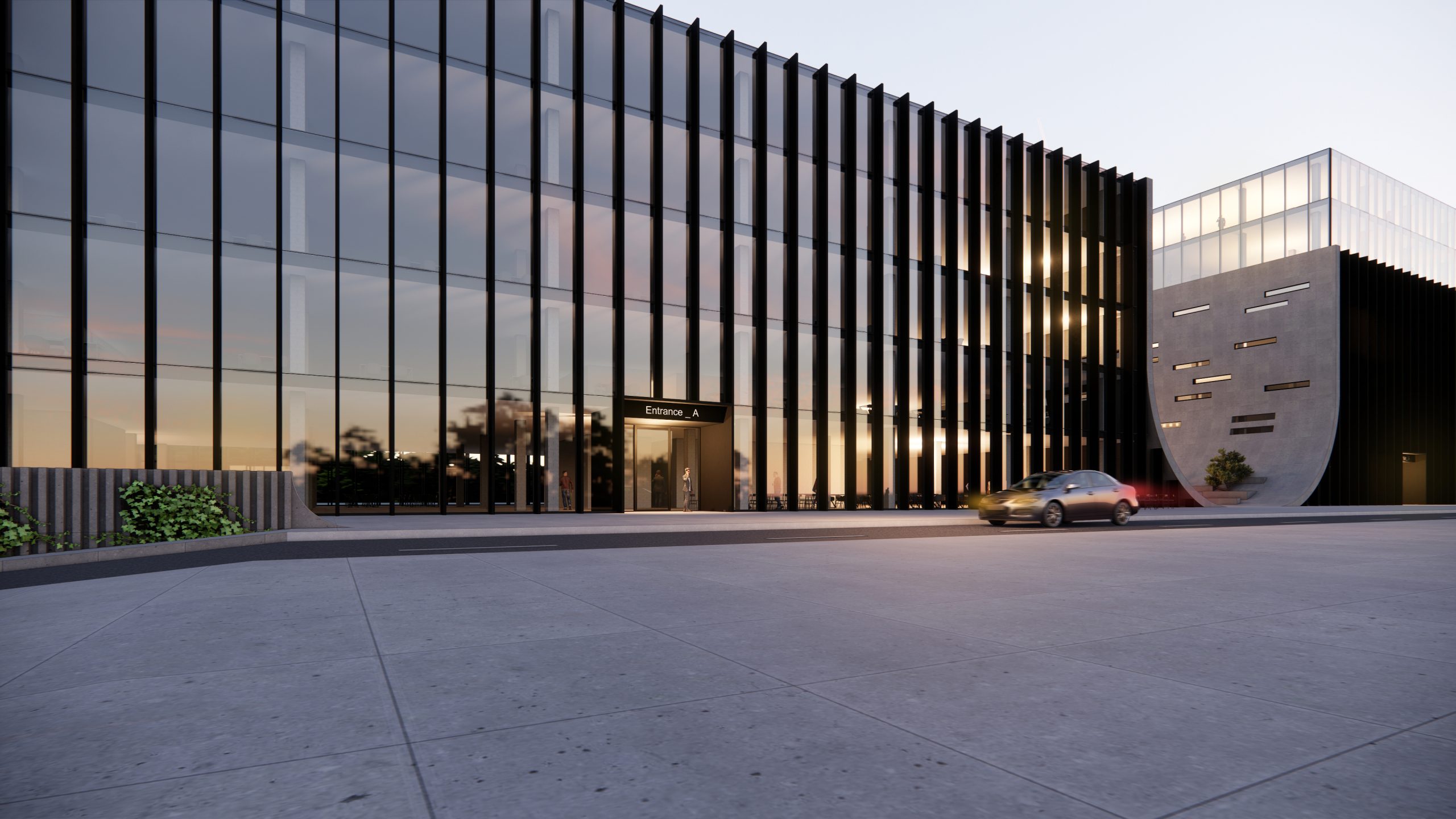JENGA – Kindergarten in Vilnius
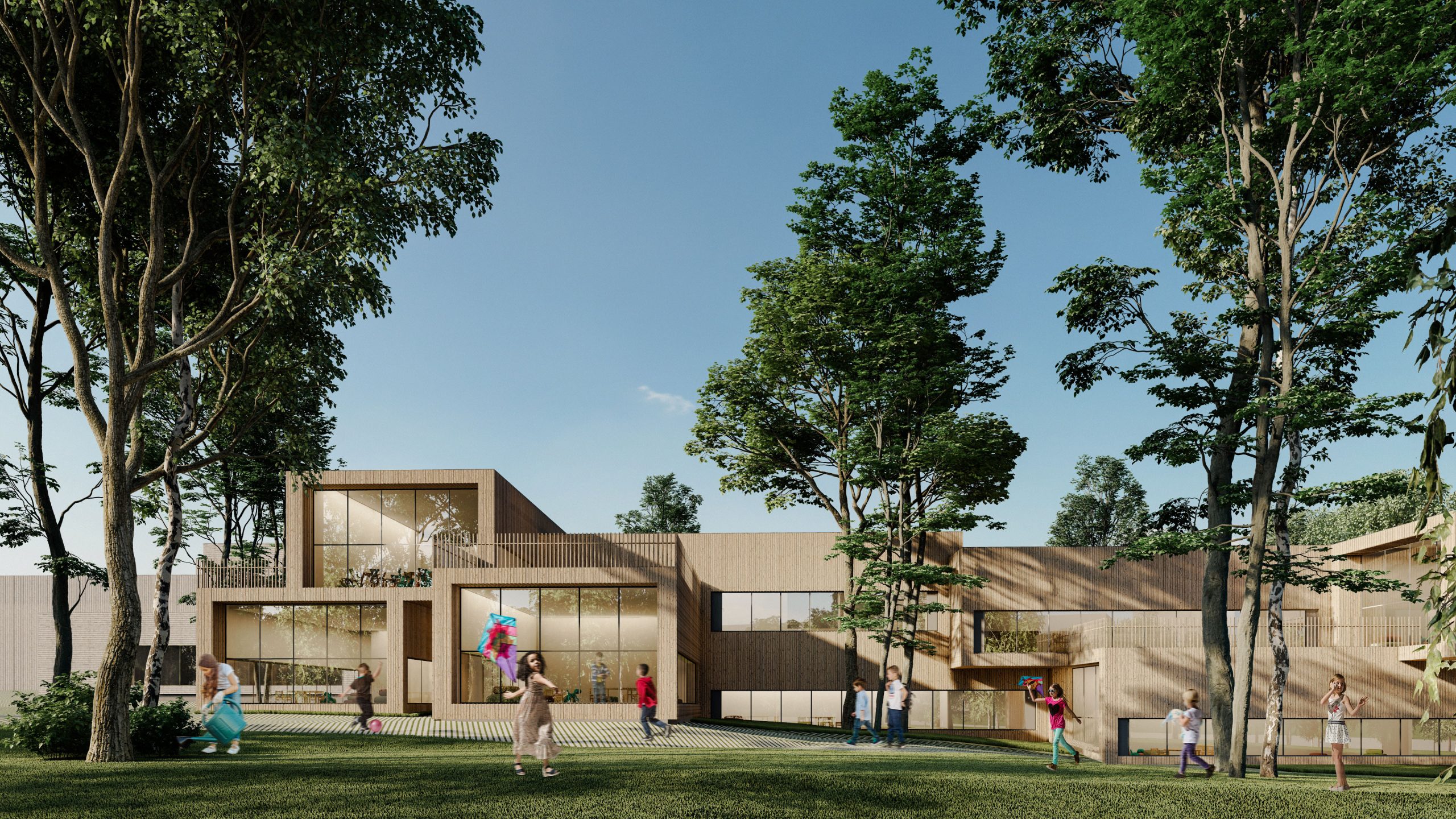
- Location Vilnius, Lithuania
- Type Educational
- Size 3 470 m²
- Year 2022
- Status Proposal
- Client Vilniaus miesto savivaldybė, Vilniaus vystymo kompanija
- Project lead Edvinas Kolakauskas
- Authors Edvinas Kolakauskas, Goda Pazukaitė, Viktorija Blažienė
Our design for the new kindergarten and community center is a story of balance—between playful creativity and purposeful structure. The building's architecture is inspired by the simple, yet fun and purposeful, idea of a Jenga tower. Like the game, each element of the building is a carefully placed module, designed to interlock and adapt, creating a space that is both stable and dynamic.
This modular approach allows the building to gently settle into its natural surroundings. Instead of a single, monolithic structure, the building is composed of individual "group modules" that are arranged to follow the land's natural slope, minimizing our impact on the existing trees and the landscape's unique topography. This method protects the existing greenery, preserves natural shade for outdoor play areas, and creates a seamless connection between the indoors and out.
Each of the 14 kindergarten group spaces is a module of its own—bright, open, and filled with natural light from three sides. These core spaces are thoughtfully arranged around shared areas, like the main hall and corridors. This design allows for a flexible layout where the main staircase can double as an indoor amphitheater, and walls can be moved to combine spaces for larger events. It's a design that recognizes that a building for children should be as adaptable and full of potential as they are.
Beyond the Jenga-like form, this project is a forward-thinking example of integrated design. We've prioritized accessibility, ensuring the entire site—from the outdoor pathways to every single entrance—is easy to navigate for everyone, including those with strollers, bicycles, or mobility impairments. We've also incorporated sustainable materials and energy-efficient systems to create a building that is not only beautiful but also built to last, with minimal environmental impact and low operational costs.
This building is more than a collection of spaces; it's a living environment designed to grow with our children and serve the community for generations.
-
Architectural Idea Competition - 2nd prize
Concept
